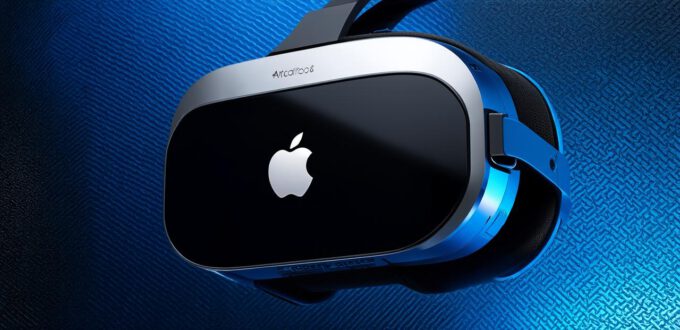Virtual Reality (VR) is an exciting technology that offers new ways to engage and interact with customers. With the growing popularity of VR devices, many companies are considering developing VR apps to reach a wider audience. However, developing a VR app can be challenging, especially when it comes to Apple’s iOS platform. In this article, we will provide you with top tips for apple VR app development that will help you create an engaging and successful VR app on the Apple App Store.
1. Understand your audience
Before you start developing your VR app, it’s essential to understand your target audience. You need to know what they want from a VR experience and how they prefer to interact with technology. This information will help you design a VR app that meets the needs of your target audience and provides an enjoyable experience for them.
2. Choose the right platform
Apple’s iOS platform is one of the most popular mobile platforms in the world, with millions of active users. However, not all VR apps are compatible with iOS devices. Therefore, it’s essential to choose the right platform for your VR app development project.
If you decide to develop your VR app for iOS devices, you need to consider the hardware and software requirements for your app. For example, you need to ensure that your app is compatible with Apple’s ARKit or ARCore technology, depending on the device you are targeting. You also need to consider the performance of your app on different devices and ensure that it provides a smooth experience for all users.
3. Design an intuitive interface
A well-designed interface is critical to the success of any VR app. Your interface should be easy to use, intuitive, and provide clear instructions to the user. You also need to consider the physical limitations of your target audience when designing your interface. For example, if your target audience has limited mobility, you need to ensure that your app is accessible using a controller or other input device.
4. Optimize for performance
VR apps require high-performance hardware and software to provide an immersive experience for the user. You need to optimize your VR app for performance by minimizing load times, reducing frame rates, and optimizing textures and graphics. You also need to consider the power consumption of your app and ensure that it doesn’t drain the battery of the user’s device.
5. Incorporate social features
Social features can help you engage with your target audience and create a sense of community around your VR app. You can incorporate social features such as leaderboards, achievements, and multiplayer modes to encourage users to share their experiences with others and compete with each other.
6. Test thoroughly
Testing is critical to the success of any VR app development project. You need to test your app on different devices and platforms to ensure that it works correctly and provides a smooth experience for all users. You also need to consider testing for potential bugs and issues that may arise when using VR technology.
7. Utilize marketing strategies
Marketing is essential to the success of any VR app development project. You need to develop a marketing strategy that will help you reach your target audience and generate interest in your VR app. This can include social media campaigns, influencer partnerships, and targeted advertising.
Case Studies: Successful VR App Development on Apple’s iOS Platform
Let’s look at some examples of successful VR app development on Apple’s iOS platform to see how these tips can be applied in practice.
1. “Ingress” by Google
Ingress is a popular augmented reality (AR) game developed by Google. It was launched in 2013 and has since become one of the most successful AR games on the market. Ingress is available on both iOS and Android platforms, but it was initially designed for iOS devices.
Ingress was successful because it combined a compelling gameplay mechanic with a social element that encouraged users to interact with each other in real life. The game also utilized Apple’s ARKit technology to provide an immersive experience for players.
2. “Animal Crossing: Pocket Camp” by Nintendo
Animal Crossing: Pocket Camp is a popular mobile game developed by Nintendo. It was launched in 2017 and has since become one of the most successful mobile games on the market. Animal Crossing: Pocket Camp is available on both iOS and Android platforms, but it was initially designed for iOS devices.
Animal Crossing: Pocket Camp was successful because it combined a simple yet addictive gameplay mechanic with a social element that encouraged users to interact with each other in real life. The game also utilized Apple’s ARKit technology to provide an immersive experience for players.
3. “Ikea Place” by IKEA
Ikea Place is a popular augmented reality app developed by IKEA. It was launched in 2011 and has since become one of the most successful AR apps on the market. Ikea Place is available on both iOS and Android platforms, but it was initially designed for iOS devices.
Ikea Place was successful because it provided a unique shopping experience that combined the convenience of online shopping with the immersive experience of augmented reality. The app allowed users to visualize furniture in their home before making a purchase, which led to increased sales for IKEA.
Conclusion
Developing a VR app on Apple’s iOS platform can be challenging, but it can also be rewarding if done correctly. By following these top tips for apple VR app development, you can create an engaging and successful VR app that meets the needs of your target audience and provides an enjoyable experience for them.
